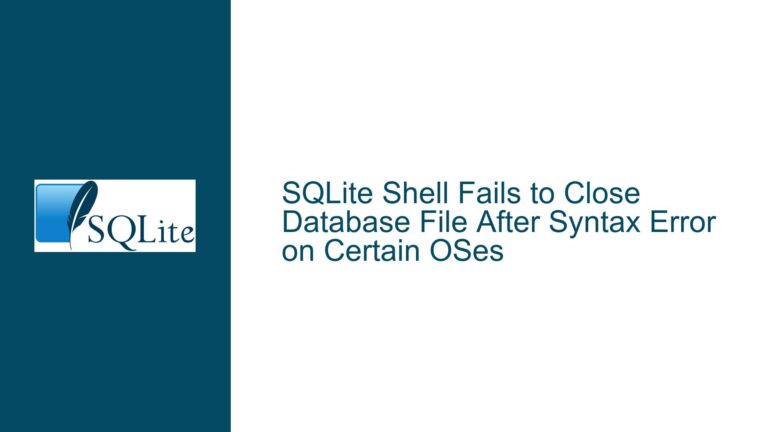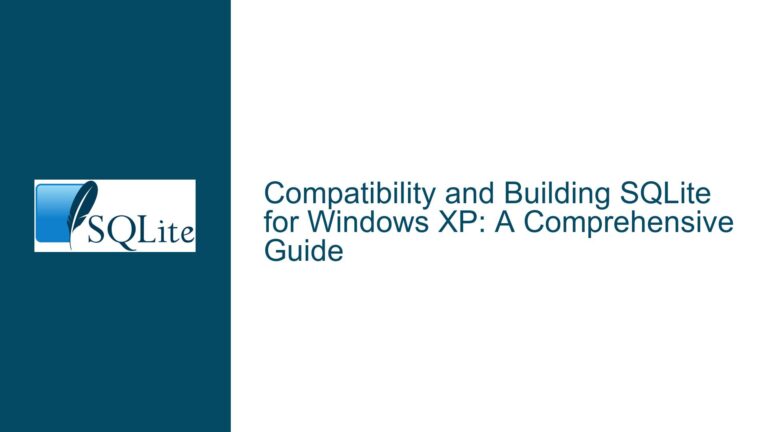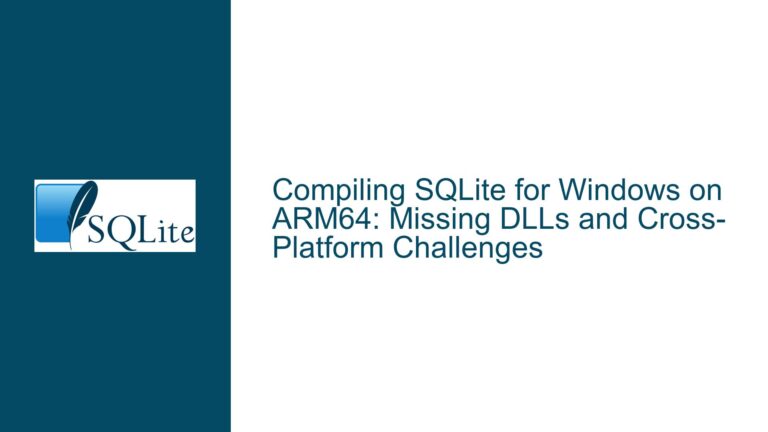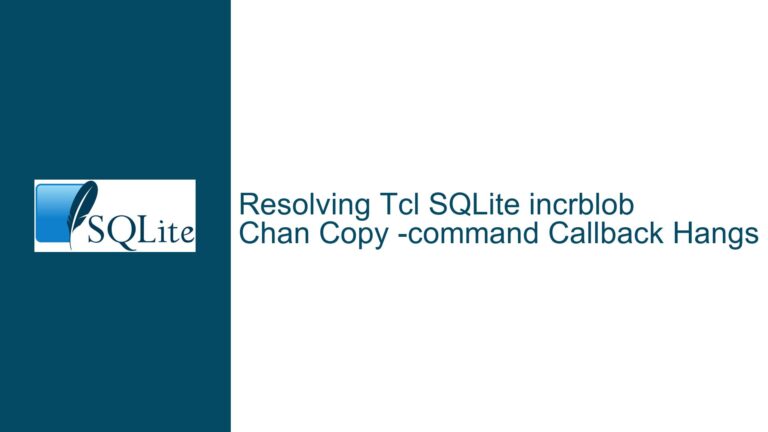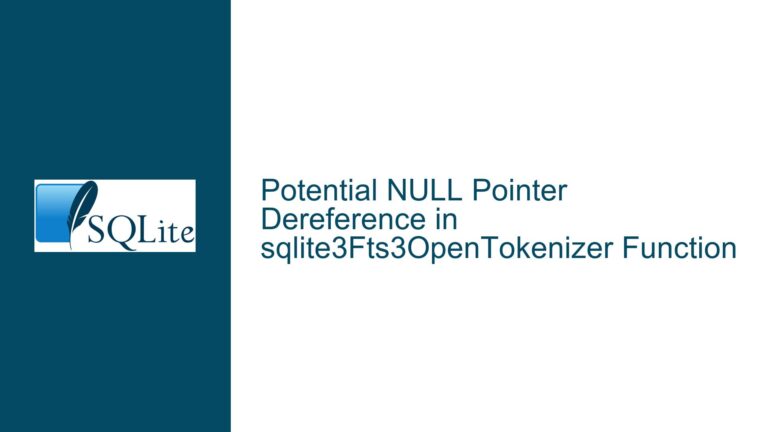SHA-3 Hash Mismatches in SQLite Downloads
SHA-3 Hash Verification Discrepancies in SQLite Downloads
When downloading precompiled binaries for SQLite, verifying the integrity of the downloaded files is a critical step to ensure that the files have not been tampered with or corrupted during the download process. One common method for verifying file integrity is by comparing the SHA-3 hash of the downloaded file with the hash provided on the official SQLite website. However, discrepancies between the expected hash and the hash generated by third-party tools can lead to confusion and raise concerns about the authenticity of the downloaded file. This post delves into the intricacies of SHA-3 hash verification, explores potential causes of hash mismatches, and provides detailed troubleshooting steps to resolve these issues.
Interrupted Write Operations Leading to Index Corruption
One of the primary reasons for SHA-3 hash mismatches is the use of different hash algorithms or configurations in the verification process. SHA-3, also known as Keccak, is a family of cryptographic hash functions that includes several variants, such as SHA3-224, SHA3-256, SHA3-384, and SHA3-512. Each variant produces a hash of a different length, and using the wrong variant can result in a hash that does not match the expected value.
In the context of SQLite downloads, the official website typically provides the SHA3-256 hash of the file. However, some third-party tools may default to using a different SHA-3 variant, such as SHA3-512, which produces a longer hash. This can lead to confusion, as the generated hash will not match the expected SHA3-256 hash. Additionally, some tools may use non-standard naming conventions or configurations, further complicating the verification process.
Another potential cause of hash mismatches is the inclusion of additional data in the hash calculation. For example, some tools may include metadata, such as file names or timestamps, in the hash calculation, leading to a different hash value. Similarly, differences in how the file is read or processed by the tool can also affect the resulting hash. For instance, some tools may read the file in chunks, while others may read the entire file at once, leading to subtle differences in the hash calculation.
Implementing PRAGMA journal_mode and Database Backup
To troubleshoot and resolve SHA-3 hash mismatches, it is essential to follow a systematic approach that ensures the correct hash algorithm and configuration are used. The following steps outline a detailed process for verifying the integrity of SQLite downloads using SHA-3 hashes:
Step 1: Verify the Hash Algorithm and Configuration
The first step in troubleshooting a SHA-3 hash mismatch is to ensure that the correct hash algorithm and configuration are being used. As mentioned earlier, the official SQLite website typically provides the SHA3-256 hash of the file. Therefore, it is crucial to configure the third-party tool to use the SHA3-256 variant when generating the hash.
Most hash calculation tools provide options to select the desired hash algorithm. For example, in the case of the Quickhash tool mentioned in the discussion, the user should explicitly select the SHA3-256 option to generate the correct hash. If the tool does not provide an option for SHA3-256, it may be necessary to use a different tool that supports this variant.
Step 2: Validate the Hash Calculation with Standard Test Vectors
To ensure that the hash calculation tool is functioning correctly, it is advisable to validate the tool using standard test vectors. Test vectors are predefined inputs and corresponding hash values that can be used to verify the correctness of a hash algorithm implementation. The National Institute of Standards and Technology (NIST) provides a set of standard test vectors for SHA-3, which can be used to validate the hash calculation tool.
For example, the input "abc" should produce the following SHA3-256 hash: 3a985da74fe225b2045c172d6bd390bd855f086e3e9d525b46bfe24511431532. By inputting this string into the hash calculation tool and comparing the generated hash with the expected value, the user can verify that the tool is functioning correctly.
Step 3: Check for File Corruption or Tampering
If the hash calculation tool is functioning correctly but the generated hash still does not match the expected value, it is possible that the downloaded file is corrupted or has been tampered with. In this case, it is essential to re-download the file from the official SQLite website and verify the hash again.
To minimize the risk of file corruption during the download process, it is advisable to use a reliable download manager or browser that supports resuming interrupted downloads. Additionally, downloading the file over a secure and stable internet connection can help prevent corruption.
Step 4: Compare Hashes from Multiple Tools
If the hash mismatch persists after re-downloading the file, it may be helpful to compare the hash generated by multiple tools. Using different tools to generate the hash can help identify any discrepancies caused by tool-specific configurations or bugs.
For example, the user can use both Quickhash and another reputable hash calculation tool, such as sha3sum, to generate the SHA3-256 hash of the downloaded file. If both tools produce the same hash, but it still does not match the expected value, it is likely that the issue lies with the file itself rather than the tools.
Step 5: Verify the Integrity of the Zip File
In some cases, the hash mismatch may be caused by issues with the zip file itself, such as corruption or incomplete extraction. To verify the integrity of the zip file, the user can use a tool like unzip or 7-Zip to test the file for errors. These tools can check the internal structure of the zip file and identify any issues that may affect the hash calculation.
If the zip file is found to be corrupted, the user should re-download the file and verify the hash again. Additionally, it is advisable to extract the contents of the zip file and verify the hash of the individual files to ensure that they have not been affected by the corruption.
Step 6: Use a Trusted Source for Hash Verification
Finally, it is crucial to use a trusted source for hash verification. The official SQLite website is the most reliable source for obtaining the correct SHA3-256 hash of the downloaded file. Third-party websites or mirrors may provide incorrect or outdated hash values, leading to confusion and potential security risks.
In conclusion, SHA-3 hash mismatches in SQLite downloads can be caused by a variety of factors, including the use of incorrect hash algorithms, tool-specific configurations, file corruption, and untrusted sources. By following the troubleshooting steps outlined above, users can systematically identify and resolve these issues, ensuring the integrity and authenticity of their SQLite downloads.

